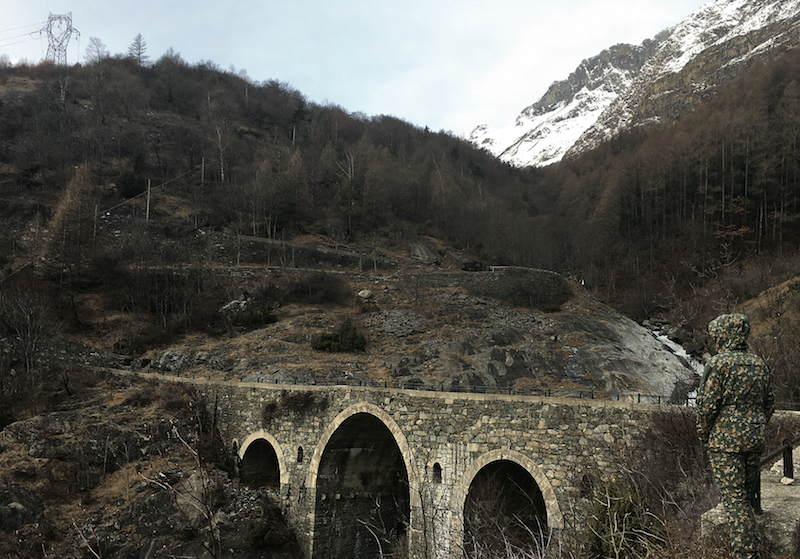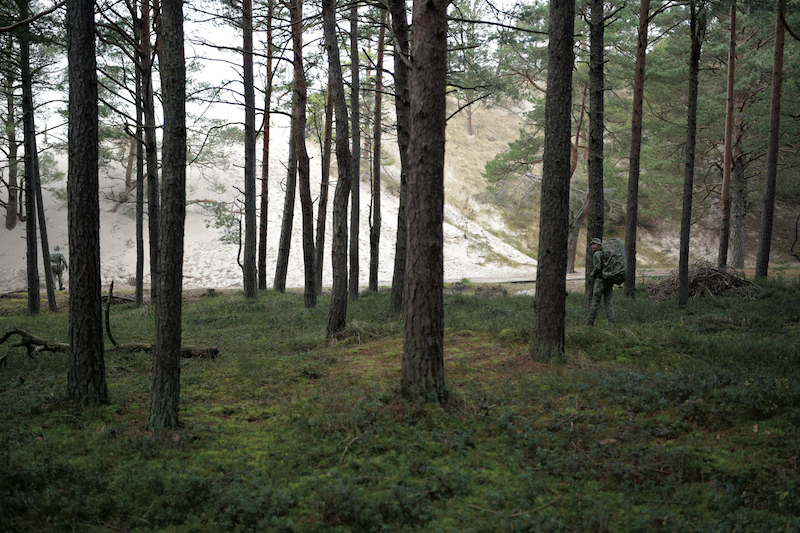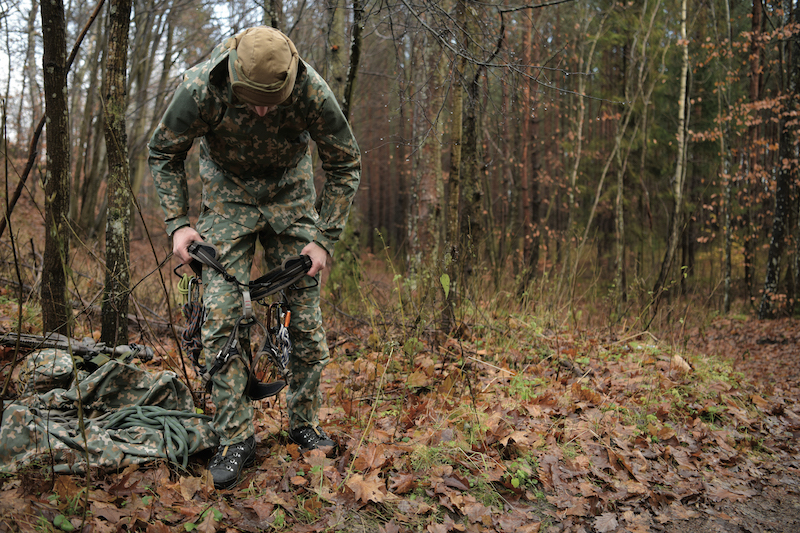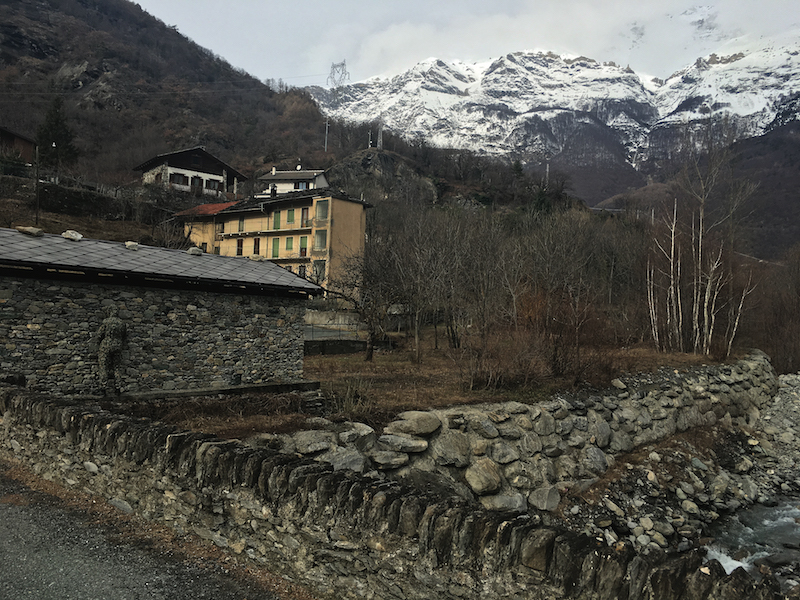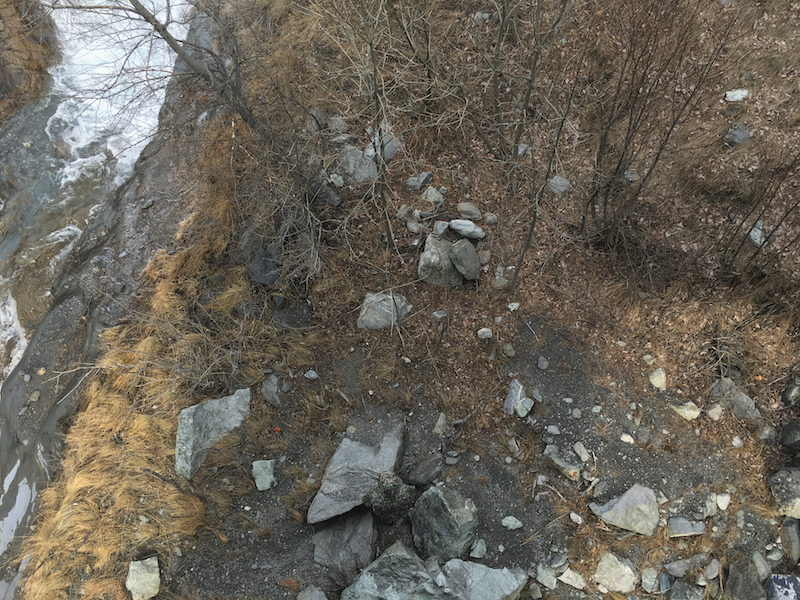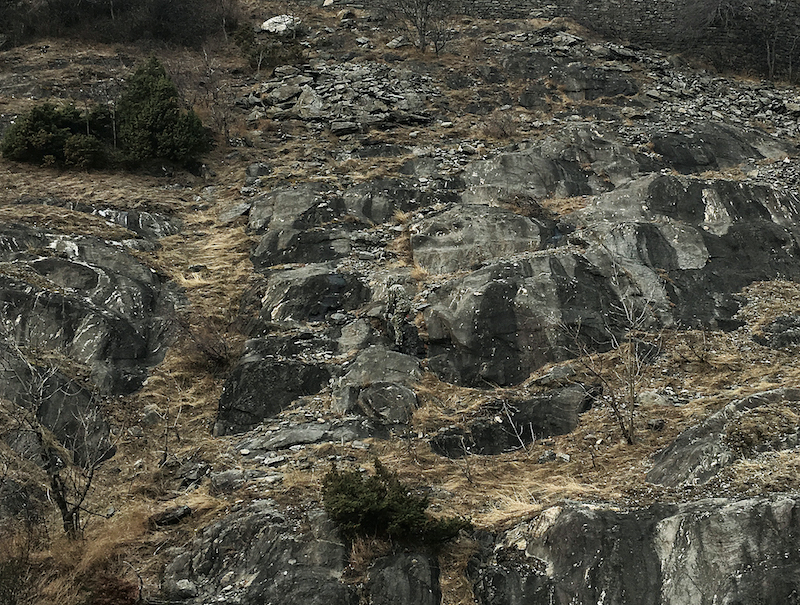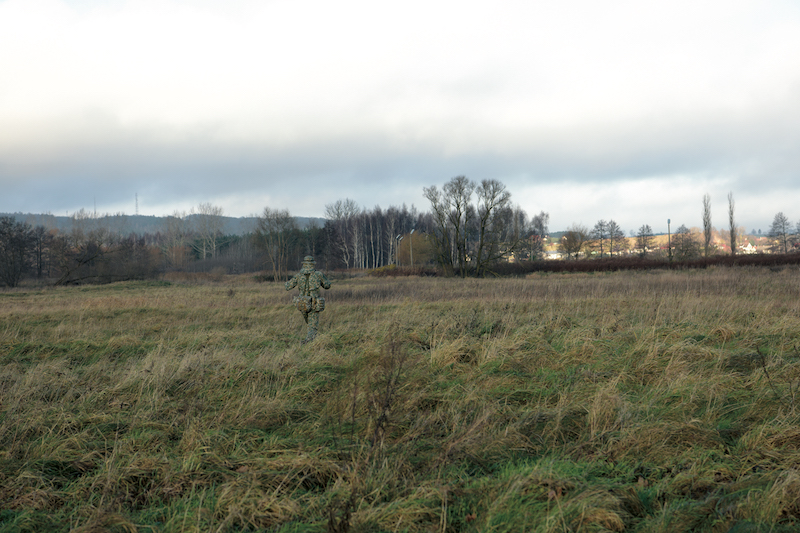Get the weekly SPARTANAT newsletter.
Your bonus: the free E-Book from SPARTANAT.
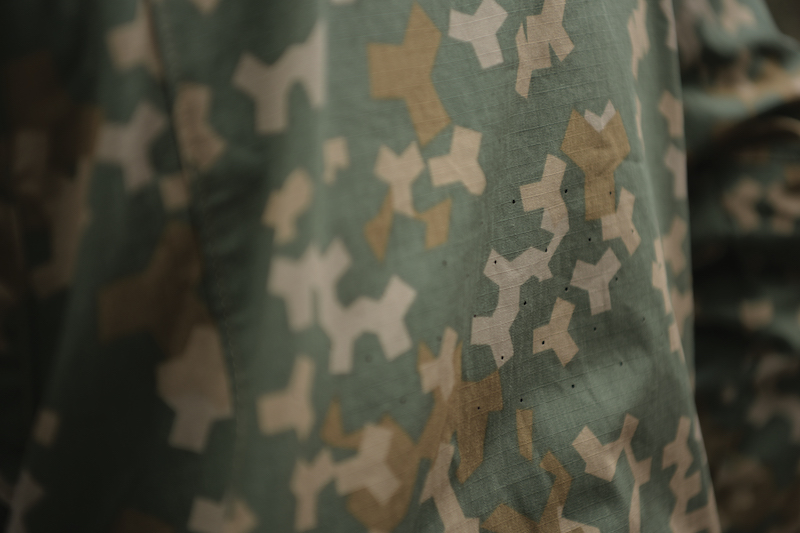
CAMOUFLAGE: TripleX - the harmony of a multi-terrain camouflage pattern
Since armies have existed, fighters have searched for the best solutions to blend in with the environment; this starts with natural objects or plants as aids in a specific area and ends with the full spectrum of artificial colors and other materials for camouflage. Different areas and terrains require specific solutions. Every fighter must employ a wide range of skills to blend into the environment. However, the dynamics of modern warfare require using universal camouflage colors, a pattern, and material form that are capable of hiding in any environment. A new approach comes from Poland. In this article, the creators of TripleX present their camouflage pattern.
The development of multi-terrain patterns is always a compromise between different types of camouflage that allows for adequate concealment across different backgrounds and in different terrains. An even more complex task is developing a pattern that sustainably hides across different distances within a specific terrain and doesn't become a solid-colored blob that makes the fighter an easy target.
When considering how many variables must be taken into account, the most important question is how to develop a one-for-all camouflage?
This question has been on Igors Sitvjenkins's mind since his entry into the army in 1997. He started developing an innovative layering system for his fellow fighters. After 15 years as an officer, collaborating with NATO groups and leading military brands in the soldier systems sector, he decided to start his own company: Sole Source.
A mix of scientific thinking, military experience, and passion for perfect camouflage led to a book called BOOS - "Book Of Operational Sculpture", in which Igor's team set out the system requirements for all the products they developed. BOOS also includes details on the development of the new TripleX camouflage pattern and serves as the basis for all products designed and sold by Igor and his partner's new brand, 3rd Alternative.
The TripleX Multi-Terrain Camouflage Pattern was developed based on seven years of thorough research. The goal was to create a universal pattern that remains hidden in three main use areas - forest, city, and mountain - while being suitable for transitional areas.
The biggest challenge arose in the actual camouflage color and contrast that helps blend into the forested areas and mountainous terrain. Since camouflage is most effective at distances over 50 m, the focus was on the correct colors of the pattern elements. TripleX camouflage colors and their interplay allow for true multi-terrain coverage, emphasized the manufacturer. The next factor was the shape, size, and ratio of the pattern elements. TripleX uses a mix of elements with different colors: dominating greenish Triplex element with star size 1.4 cm, brown Triplex element with star size 1.4 cm, khaki Triplex element with star size 0.8 cm, and gray Triplex element with star size 0.8 cm. Studies show that shapes in the range of 0.8-1.4 cm provide the best ability to blend into different terrains without turning the pattern into a single flashy color.
"TripleX is based on Euclid's geometric element," explains Igors Sitvjenkins, "which allows the pattern to be brought into various irregular shapes and to form a pattern with horizontal and vertical lines." In this way, it blends into nature or the urban environment while remaining digital, with the ability to connect with the surrounding elements and light.
TripleX in FORESTED TERRAIN
A common mistake is the belief that the forest is only dark green; therefore, in the past, camouflage patterns that were meant to mimic the forest were mostly dark green with black spots. There should be a proper mix of colors and element shapes to ensure adequate concealment. In the TripleX Multi-Terrain pattern, the main element is the greenish background with a gray hue. This allows for the most effective blending with wood surfaces, leafy tree areas, and coniferous tree areas, in dense or sparsely covered forests. The tone is called "misty woodland" and gives every fighter the freedom of movement in any forested area.
Another inspiration for the colors was the tone of wild animal fur in autumn, which, combined with the grayish shade, provides the optimal foundation for concealment. By focusing on the size ratio of individual elements, the color blend reduces the likelihood of appearing as spots or creating a shadow effect that doesn't match the environment.
TripleX Pattern - forest terrain, detailed view (late autumn)
TripleX in URBAN AREA
The tactical doctrine requires that urban combat operations be conducted only when necessary and that built-up areas be isolated and bypassed rather than engaging in costly and time-consuming combat actions. Adhering to these rules becomes increasingly difficult as urban sprawl changes the face of the battlefield. Large metropolitan areas in different countries house industrial facilities, transportation complexes, economic institutions, as well as political and cultural centers - the power and wealth of each country. Abandoning or conquering these centers can bring crucial psychological advantages that often determine success or failure in a larger conflict. Villages and small towns are often drawn into conflicts because they are located near major access routes. Urbanization is a complex, multi-layered process influenced by many factors, including the cultural development of a country, its economic resources, and its industrial capacity. While its forms vary from region to region, urbanization is marked by a general pattern of changes in land use and the spread of man-made features over natural terrain.
The tactical terrain analysis traditionally focused on some elements of the urban environment, such as allocating land for agriculture and forestry and distributing railway and road networks. However, the emphasis has always been on natural terrain elements. In Europe and other urbanized areas of the world, there is a need to increase awareness of the impact of artificial features on the tactical overall concept. How urban terrain elements affect the advance is a crucial aspect in the planning of all tactical options by brigade and higher command.
The expanding urban development affects military operations as the terrain changes. The increasing population density and the accelerated growth of cities have made the problems of fighting in built-up areas an urgent necessity for the military, law enforcement, and specialized security forces. This type of combat cannot be avoided. The composition and distribution of smaller built-up areas as part of an urban complex make it difficult to isolate enemy activities occupying one or more of these smaller enclaves. Urban terrain is expected to be the future battlefield in Europe and Asia, with brigade and higher commanders focusing on such operations.
Since urban areas provide poor cover, it is very likely that the enemy will spot soldiers moving through urban areas. Camouflage effectiveness in built-up terrain is therefore determined by both the color of the pattern elements and their size ratio. The right mix allows for blending in and not standing out from the background of the built-up area. For this reason, the TripleX pattern has universal shades that change across the entire visual spectrum depending on the background and light intensity.
TripleX in MOUNTAINOUS TERRAIN
With approximately 38 percent of the world's population living in mountainous regions, an army must be prepared to master this terrain as well. Mountains exist in almost all countries of the world, and almost every war has involved some type of operations in mountainous terrain. This pattern will not change, so soldiers will also fight in mountainous terrain in future conflicts. While the use in the mountains has not changed, several advancements in equipment and transportation have enhanced soldiers' capabilities. Camouflage becomes even more critical.
Ridges can provide covert access routes hidden from different areas by vegetation and terrain relief. Parts of an approach revealed will leave a troop exposed to observation and fire for a long time. The enemy can easily spot movements in this region. Although mountainous terrain typically allows for excellent long-distance observation and firing sections, steep slopes and rugged terrain complicate a soldier's ability to estimate the range accurately and often lead to large areas remaining hidden from observation. The presence of sharp relief and a lot of dead space allow concealed approaches and make monitoring difficult despite good long-distance observation. Mountainous terrain is where the urban spectrum blends with the forest spectrum, depending on the type of rock and vegetation. Therefore, TripleX can hide in the high mountains, at the foot of mountains with vegetation, or in highland areas and blur the contours of the fighter in the surroundings.
TripleX in TRANSITIONAL TERRAIN
Very often, the combat area is temporary and difficult to classify as a specific operating area. However, the ability to blend in is determined by light and shadow effects and the intensity of light, whether artificial or natural, in every terrain and environment. The main advantage of TripleX camouflage is the light effect and reflection of the pattern. TripleX provides camouflage with a chameleon effect, with different contrasts depending on light intensity. As the background environment changes, TripleX adapts and changes the contrast with the environment to avoid standing out as too bright or too dark spots, especially in morning and evening light.
The MULTI-TERRAIN Application
The battlefield
SPARTANAT is the online magazine for Military News, Tactical Life, Gear & Reviews.
Send us your news: [email protected]
Ad
similar
Get the weekly SPARTANAT newsletter.
Your bonus: the free E-Book from SPARTANAT.


